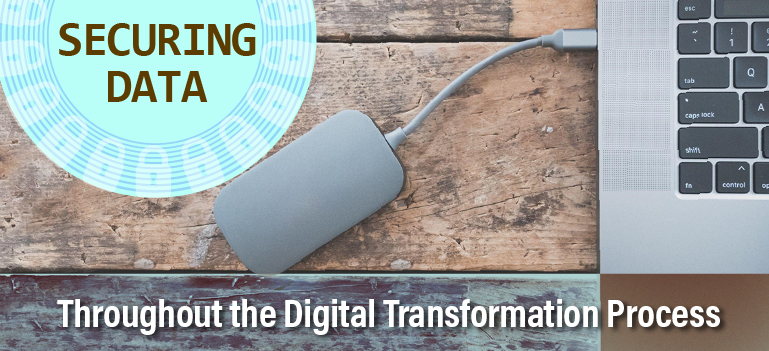Operating a successful business has never been easy, but in today’s increasingly crowded and competitive market, the challenges have perhaps never been greater. To survive, businesses must be leaner and more efficient than ever before.
And, for many businesses, the key to longevity and prosperity in the current operating environment is digital transformation. Digitizing operations can significantly increase productivity while reducing operating costs.
However, the transition to digital platforms and processes can be complicated, particularly when it comes to the management and transfer of company data. This article discusses the importance of securing data throughout the digital transformation process and describes best practices for making it happen.
What Is Digital Transformation and Why Does It Matter?
Digital transformation is the process of shifting most, if not all, of a company’s operating processes to digital environments. Though the process can be slow, complex, and costly at the outset, digital transformations can generate a substantial Return on Investment (ROI), boosting efficiency and productivity.
This is because the digitalization of processes dramatically improves access to and sharing of information, facilitates collaboration, and, consequently, expands operational scope and scale.
As beneficial as a digital transformation can be to the performance, productivity, and profitability of your business, the process can be perilous for your data. The transition can make your data subject to being lost, inappropriately discarded, stolen, or misused. This is why being proactive in regard to data security is essential throughout the process of digitally transforming your operations.
Appoint a Chief Data Officer
One of the first and most important things you can do to secure your data during a digital transformation is to appoint a Chief Data Officer (CDO). The CDO will have expertise in identifying, securing, and implementing the best security software and systems for your company’s needs.
In addition, the CDO will have the skills needed to analyze and taxonomize data according to their required levels of security. This allows for a more efficient and effective digital data storage and organization strategy.
Because the CDO’s principal mission is to manage data, including its digitalization and security, they will also likely lead in vetting the security processes of partners and stakeholders. Such efforts are critical insofar as digitalization often involves network or system interconnectivity, linking the company’s digital platforms with those of external parties.
Those charged with ensuring data security must analyze relevant attributes of partners’ and stakeholders’ security systems and negotiate remediation strategies as needed. Only then should system access be granted to authorized external parties.
Identifying and Discarding Unnecessary Data
When you’re migrating your business processes to the digital environment, you’re likely to find an immense amount of data that is no longer needed. You are also likely to find yourself with a significant amount of equipment that your business will never use again.
While it’s wasteful and inefficient to digitize all your company’s data without determining which materials are no longer needed, it’s equally problematic to simply discard unwanted data. It’s imperative to have a strategy in place for categorizing the data according to the sensitivity of the information in order to determine how it will be discarded.
For example, documents that contain the personal information of former clients must be handled carefully and securely, even if the accounts are closed. This would likely involve the shredding or incineration of the materials by authorized personnel.
Disposing of office equipment can be an even more complex issue. Computer hard drives, for example, often retain sensitive data, even when it has ostensibly been deleted. This is why it is often best to enlist the services of a reputable tech disposal company, one that will guarantee and provide proof of the safe and secure destruction of your hard drives and unwanted data.
Create a Content Hub
The digital transformation process is precisely that — a process. And that means that it takes time to complete. In order to keep your data both secure and accessible as you move through the digital transformation process, it’s a good idea to create a central content hub.
The content hub will not only make your digital transformation more efficient, but it will also reduce the risk of your data being lost, compromised, or misfiled during digitalization. The central content hub may reside, for instance, on a managed cloud platform.
Managed cloud systems are a superb solution for minimizing the risk of cyber-attacks while ensuring that your employees have secure access to the data they need when they need it. The content hub enables employees to securely retrieve, store, and share data, allowing you to safely discard defunct materials as soon as the data is uploaded to the hub.
The Takeaway
Digital transformations are essential for maximizing the efficiency, productivity, and security of your operations. However, the process takes time and may put your data at risk if proactive measures are not taken. By appointing a Chief Data Officer, creating a central hub, and securely disposing of unneeded materials and equipment, though, you can keep your data safe throughout digitalization.
Miles Oliver



